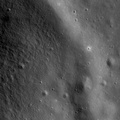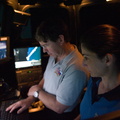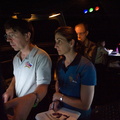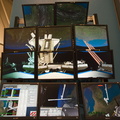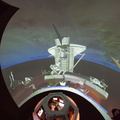
WIKIARCHIVES.SPACE
The Human Spaceflight Archive

A small rille hugging the contours at the base of Gruithuisen Gamma, at the contact between the dome and the surrounding mare. Image is 1.6 kilometers or 1750 yards wide, illumination is from the left, NAC frame M104776541R.
Information
- Taken in
- Author
- NASA/GSFC/Arizona State University
- Description
-
A small rille hugging the contours at the base of Gruithuisen Gamma, at the contact between the dome and the surrounding mare. Image is 1.6 kilometers or 1750 yards wide, illumination is from the left, NAC frame M104776541R.
The Gruithuisen Domes, a Constellation program region of interest, are located on the northeast border of Oceanus Procellarum at the highlands-mare boundary. The three Gruithuisen domes are named for nearby Gruithuisen crater. The two largest domes have been unofficially referred to for many years as Gruithuisen Gamma and Gruithuisen Delta, with the smallest dome called NW (for "northwest").
NASA's Goddard Space Flight Center built and manages the mission for the Exploration Systems Mission Directorate at NASA Headquarters in Washington. The Lunar Reconnaissance Orbiter Camera was designed to acquire data for landing site certification and to conduct polar illumination studies and global mapping. Operated by Arizona State University, LROC consists of a pair of narrow-angle cameras (NAC) and a single wide-angle camera (WAC). The mission is expected to return over 70 terabytes of image data.
- Created on
- Tuesday 8 June 2010
- Albums
- US SPACE PROGRAM / PROBES / MOON / LRO/LCROSS / Mission Photos (Edited)
- Source link
- https://photojournal.jpl.nasa.gov
- Visits
- 15
- Rating score
- no rate
- Rate this photo
- License
- Public Domain
- Modified by WikiArchives
- No (original)
- Downloads
- 0
Powered by Piwigo

